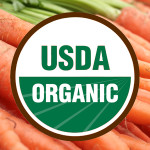
 What do Cheerios and apples have in common? They are the latest and very public battlegrounds for the GMO [genetically engineered organisms] debate. But these two mainstays of American childhood nutrition are headed in opposite directions. While the arctic apple, genetically modified to not brown when cut, is all but set to be approved for production, original Cheerios is now GMO-free. And while general public is wholeheartedly in support of knowing what is in their food, shoppers are still confused as to what all the labels really mean.
What do Cheerios and apples have in common? They are the latest and very public battlegrounds for the GMO [genetically engineered organisms] debate. But these two mainstays of American childhood nutrition are headed in opposite directions. While the arctic apple, genetically modified to not brown when cut, is all but set to be approved for production, original Cheerios is now GMO-free. And while general public is wholeheartedly in support of knowing what is in their food, shoppers are still confused as to what all the labels really mean.

Now some of the very groups who dumped millions into defeating state GMO labeling laws across the country have changed tack and are pushing for a national GMO labeling law; one that only requires labels on GMOs “proven” to cause health problems. The problem? Patents and “intellectual property” laws not only severely restrict how GMOs can be researched, but have provided an easy way for the companies to discredit study results they don’t like.
While food and seed giants figure out how to take the teeth out of GMO labeling laws before they even happen, there is good news for the more than 90 percent of American consumers who want to know whether or not something contains GMOs: We already have a label.
Certified organic farmers and food producers can’t use GMOs. Ever. And there are strict regulations in place for certified organic producers to avoid GMO contamination, including testing. As Melody Meyer, vice president of policy and industry relations at UNFI and Rodale Institute business member explained recently, “In November 2012, the NOP clarified through formal rule making that testing for prohibited residues in organic products, including GMOs, MUST occur periodically (on an annual basis) and that certifiers must investigate and issue noncompliance notices accordingly to organic operations that fail to meet the requirement.”
GMOs are also only one aspect of a toxic food system. Simply choosing non-GMO does not make for healthy food. In the last five years, the American Academy of Pediatrics, President’s Cancer Panel and physicians nationwide have publicly advised us all, especially children and pregnant women, to reduce our dietary exposure to synthetic pesticides.
While debate rages on over the “safety” of GMOs, consumers who want to avoid the toxic pesticides and herbicides proven to have negative impacts on our health and wellness (and which we’re already carrying around in our bodies): We already have a label.
Certified organic farmers are required to start with good design and good management to avoid pest problems in the first place, using naturally derived products only as a last resort. The focus is on creating a healthy balance on the farm.
Organic is non-GMO and so much more.
The label isn’t new or sexy, but it is staid and proven and trustworthy. Organic farming is the most regulated kind of farming out there. And organic farms are third-party verified; not only to ensure what they aren’t doing (like using prohibited materials and practices), but to ensure they are actually being good stewards of the land and water on which we all rely.
By all means, recognize and support the incredible work non-GMO groups are doing nationwide (we do) and rally around GMO labeling (we are). But if you really want to take down the GMO giants, champion the organic farmer.
Maria Rodale recently said, “The number one thing that changes minds is when [conventional farmers] see an organic farm that works.” Members of Rodale Institute’s Heritage Society can provide critical support preserving the heritage of agriculture in our nation, while promoting and supporting the efforts of the modern organic farmer.
Organic farmers are changing the very make-up of our agricultural landscape for the better and their label reads “USDA Organic.”
Visit EcoWatch’s FOOD and GMO pages for more related news on this topic.


Leave a Reply
You must be logged in to post a comment.